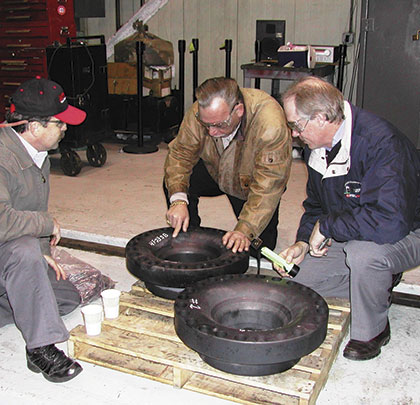How often are good ideas turned away because we cannot seem to justify their returns with hard dollars? More often than not, it is not because they do not provide the expected quantum returns, but that we do not know how to properly communicate what the returns are. In this article we will review and discuss the barriers to selling not only the concept of Root Cause Analysis (RCA) but also the recommendations generated as a result of these analyses.
DEFINING ROOT CAUSE ANALYSIS
Justification! While it may be defined differently by different people, we find ourselves faced with its ramifications every day. In our work lives we are constantly justifying our worth to the corporation in an effort to succeed and prosper (especially when the next “reorganization” is announced). At home we rationalize why it would be cheaper to purchase a new car versus continue to repair the existing one over and over again. This game is nothing new to us. The difference between those who are successful at justification and those who are not, is merely the ability to sell.
We find ourselves in this position when trying to sell the concept of Root Cause Analysis (RCA) as well. Many of our clients spend millions of dollars on fancy new high tech equipment because the old ones always failed. Many spend millions of dollars on improved methods of repairing equipment and better predictive tools. However, looking at why all this money is spent, we find that it is to compensate for the failure of existing equipment to perform as we expect it to.
MAKING BETTER PREDICTIONS WITH BETTER DATA
Does buying new equipment ensure that it will not fail due to the same reasons the old equipment did? Does improving our Mean Time Between Failure (MTBF) and Mean Time to Restore (MTTR) ensure that failure will not occur? No it will not. It only means that we will predict it earlier, and then fix it faster. So how do people justify the expenditure of such investments, when the returns are questionable? Salesmanship!
We find that money seems to be available and justifiable when we buy tangible things such as a new piece of operating equipment or an infrared imaging unit. When we purchase such items we can actually see what we purchased. What about the intangibles that can save us money? Failures do not just happen; they are a result of a series of cause and effect relationships stemming from the involvement of the human being.

UNDERSTANDING THE HUMAN ELEMENT
Do bearings just fail (other than when they reach their design life, which is rare)? Oftentimes we find that the human involvement with the decisions about the type of bearing in a specific service, the frequency of lubrication, the type of lubricant, the method of installation are incorrect. The fix in these circumstances require that we correct the flawed decision making systems of our personnel. This means that we would have to update our outdated installation procedures, implement a system of proper lubrication and educate our designers about installing the proper bearings in a particular operating environment.
Are these fixes capital expenditures? Absolutely not! Are they tangible? Absolutely not! These are referred to as “soft side” issues because they deal with the human being and improving their decision-making skills, which directly affect our operations. Then why in an environment when money tightens up, are training dollars the first to be hacked? Because training dollars are deemed expendable and intangible.
When we review the string of logic just described, we find that errors of omission and commission are what lead to physical failures occurring. Yet we tend to justify spending the available money only on the physical end and not the people end. This has serious implications in that merely replacing parts does not make the failure go away, it merely predetermines the MTBF. If we are lubricating rotating equipment properly, it does not matter how often or what type of bearing we put back on, it will fail again due to the systems environment it is exposed to.
A LOOK AHEAD
In next month’s conclusion, we’ll explore how to justify conducting a RCA, along with addressing specific objections that many operators and managers use to rationalize putting off root cause analysis. When one takes a closer look at how equipment is used and how its MTBF creates a ripple effect throughout the organization, it becomes clear that RCA is not a luxury, but a necessity. ◆
Robert J. Latino is CEO of Reliability Center, Inc. Mr. Latino is a practitioner of root cause analysis in the field with his clientele as well as an educator. Mr. Latino is an author of RCI’s Root Cause Analysis Methods© training and co-author of Basic Failure Analysis Methods© workshop. Mr. Latino has been published in numerous trade magazines on the topic of root cause analysis as well as a frequent speaker on the topic at trade shows and conferences. His most recent publication is titled “Root Cause Analysis—Improving Performance for Bottom Line Results.” He can be contacted at 804.458.0645 or blatino@reliability.com.
____________________________________________
MODERN PUMPING TODAY, September 2015
Did you enjoy this article?
Subscribe to the FREE Digital Edition of Modern Pumping Today Magazine!
![]()


